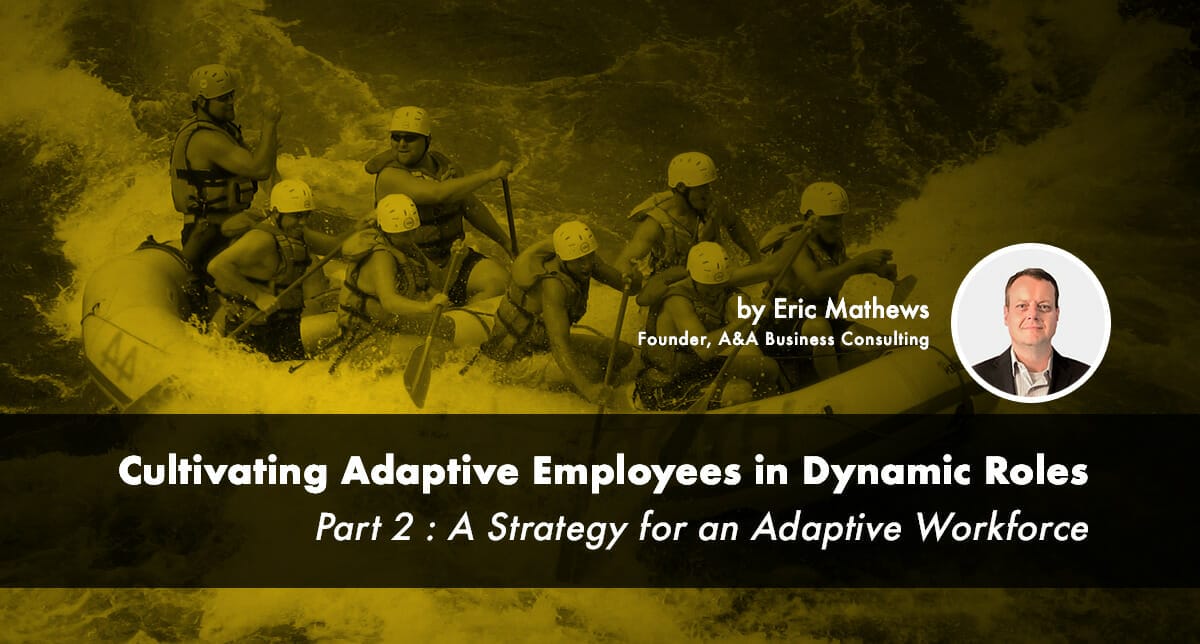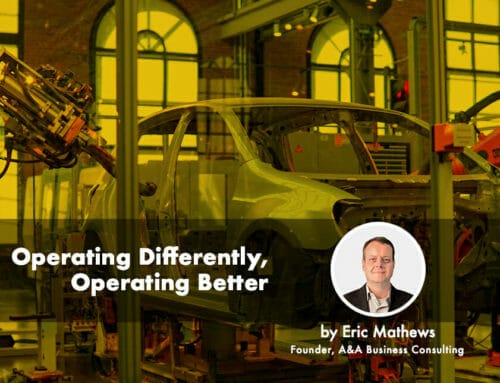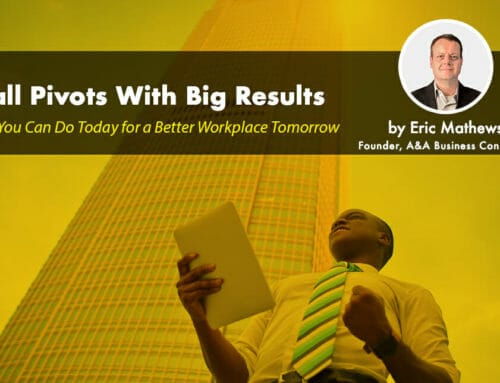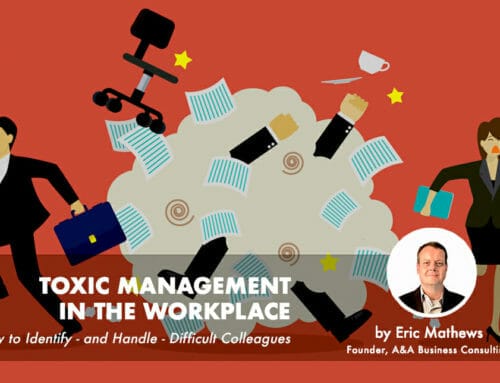In my previous post about adaptive employees, I identified two different kinds of roles you’ll find in your company: static and dynamic roles. While static roles generally can stick to a rigid script or process, the future of your company relies on how well your dynamic employees can adapt to problems, people, and the larger context.
In this second post of the two-part series, I’ll give you some key insights on my strategy, developed over thirteen years consulting for dozens of business leaders in the manufacturing industry.
Don’t process-engineer a people problem.
In the previous post, I let you in on one of my greatest pet peeves–the drive-thru attendant who can’t adapt their script to the current scenario. The problem with the drive-thru script is that someone higher up in management attempted to take out the “human element.” They thought they could process-engineer every human interaction. But as you and I both know, it’s just not possible.
And yet, some managers and executives will try a similar tactic. Instead of addressing personnel problems, doing the hard work of training and engaging, they’ll blame or hide behind the process. They compound the issue by adding to or reinventing processes and procedures over and over again.
Rarely does this work.
In order to standardize the employee problem, these managers create a rigid process that annoys the other employees and the customers. If anything, it decreases productivity and increases staff frustration (they all know who you’re instituting the new policy for). Those in charge can end up process-engineering their dynamic subordinates to death.
Managers who try to process-engineer a people problem will kill their productivity.
Business is people-powered, and you can never fully take away the human element, nor should you want to. When talking about technology in manufacturing, Burke et al. note that “rapid technology changes and trends have made the shift toward a more flexible, adaptive production system almost an imperative for manufacturers who wish to either remain competitive or disrupt their competition.” An adaptive employee is critical to the future success of your company’s dynamic roles.
It starts with engaged management.
Managers often come into their role thinking that their primary task is managing processes. But it’s really about managing people. If managers manage correctly, from an engaged, people-oriented posture, they wouldn’t have to re-engineer the process to eliminate the human element.
[ss_click_to_tweet tweet=””Managers don’t manage processes. They manage the people in the process.” – @AABizConsulting” content=”Managers don’t manage processes. They manage the people in the process.” style=”default”]
If you hope to cultivate adaptive employees, you need to embrace the people-oriented nature of the work. Prioritize training and empowering employees in their dynamic roles. If someone gets off track, take the time to help them refocus on the objective. In other words, you need to engage and lead by example.
In my experience, there are three different ways of relating management to engagement.
There’s disengaged management, characterized by low productivity and low employee turnout. It’s no wonder their employees hide behind a script–who do we think they’re learning it from?
Then, there’s over-engaged management, also known as micromanaging. While it might seem to generate higher productivity in the immediate, high employee dissatisfaction and high turnover will yield lowered productivity in the long run. It’s hard to meet goals when you’re constantly training new replacement hires.
Finally, there’s engaged management, where managers need to operate. It looks like optimal check-in schedules, clear horizontal and vertical communication, and accepted expectations. With these behaviors in place, you can evaluate in process how goals are being met and guide employees to adapt as necessary. Without this level of engagement, employees lack the encouragement and oversight to adapt within their dynamic role.
Talk about objectives instead of tasks.
When you talk to your employees about objectives (“What are we trying to accomplish in the big picture?”) instead of tasks (“What have you accomplished so far today?”), you are drawing them into the larger conversation about the mission and vision of the team, department or organization. It’s not that you don’t measure tasks or activity lists–these can be vital productivity tools–but you need to take the conversation beyond that point.
Accomplish tasks, but talk about objectives.
So your employee performed the same task ten times in the last hour. That’s a good measure of output. But what does that really mean? How is that task contributing to the broader objective? What’s working? What’s not working? Why do they need to perform that task? Are they hitting the overall outcomes?
An employee who can answer these questions is empowered and ready to pivot when the need arises because they understand the larger objective.
Invest in training for the transitions.
As more work in the future of manufacturing relies on adaptive skills, managers and executives will need to invest in training. The entire manufacturing industry is undergoing a transition process. Yet, in my experience, cultivating adaptive employees within dynamic roles, while critical to the success of a company, is often overlooked.
Sirkin, Rose, and Choraria seem to agree, writing, “Little of the current US manufacturing workforce or the pipeline of future workers is equipped to compete in the world of Industry 4.0. The new systems will require more than the technical training provided in today’s vocational schools and in the workplace. They will also demand ‘adaptive skills,’ such as the ability to think critically, solve complex problems, and continually learn. In fact, we estimate that roughly half of today’s skilled workers and those currently being trained may not qualify for the jobs that will be in the greatest demand.”
As you consider the future of your company, are you currently investing in the requisite training to meet the output demands of tomorrow? Or will you suffer from having only half the qualified skilled workers you need?
Forward-thinking managers invest in adaptive skills for dynamic roles.
Whether this is developing mentoring systems, incentivizing continued education, or bringing in focused workshops, there are numerous ways to invest in further training. But it has to be a priority for those in charge.
I believe it’s possible to cultivate adaptive employees. It begins by identifying dynamic roles, focusing on people, engaging employees, talking about objectives, and investing in training.
To discuss creating a more personalized strategy for cultivating adaptive employees in your company, I offer a free 15-minute consultation call. Let’s continue this conversation.





